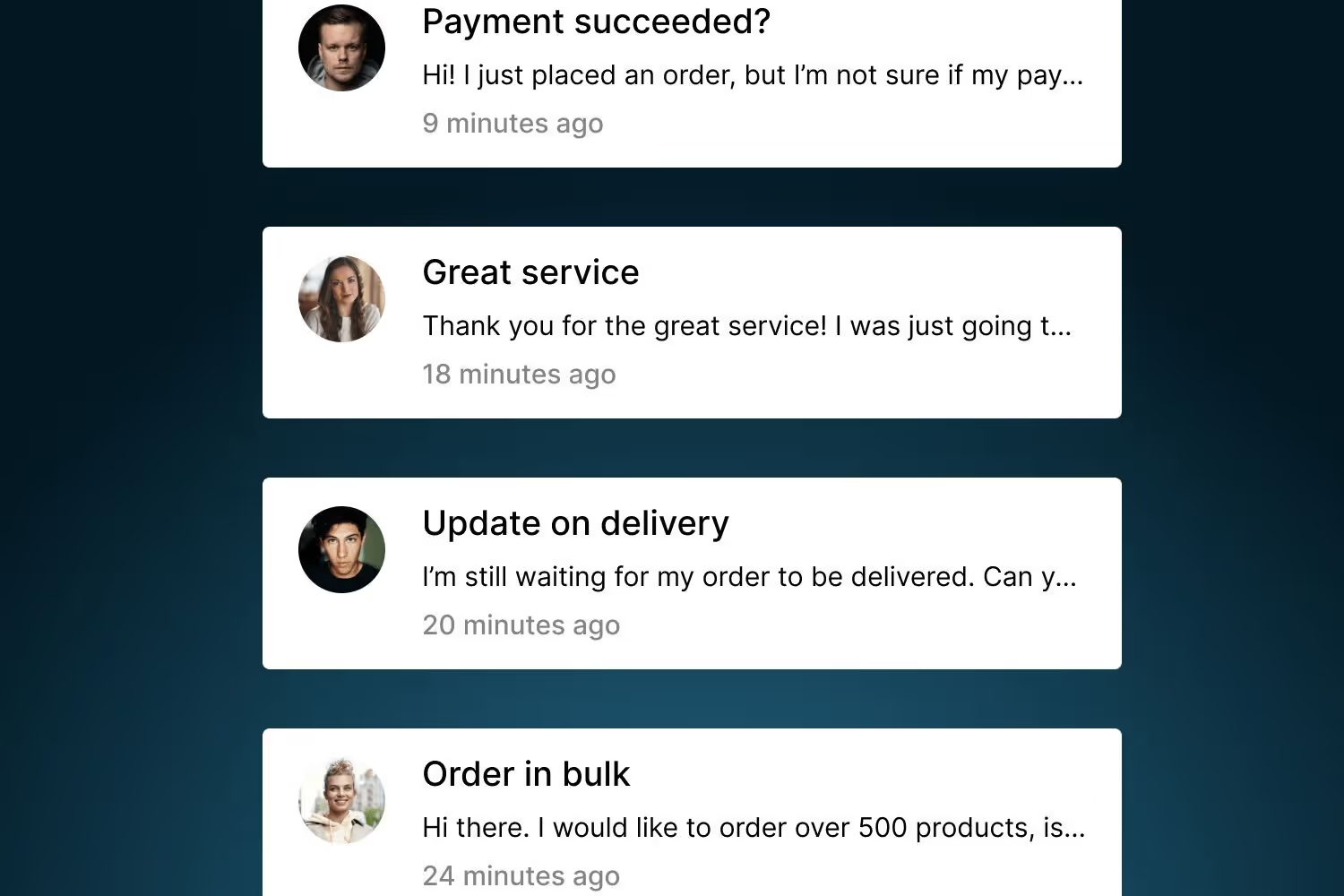Email overwhelm is a common dilemma for most of us – especially at work. Did you know that 319.6 billion emails are sent and received per day worldwide and that on average, employees get 121 emails per day?
Spending time reading emails that aren’t a priority isn’t productive, and it can sap the creative energy of your team. That can make it hard to deliver good service and tough to innovate new ways to grow your business. By finding a way to effectively manage your inbox, you’ll have more time to focus on making your customers happy and finding new growth paths. There are a lot of great ways to manage emails that don’t destroy productivity and that’s what the goal is here: to be more efficient so that we can focus on tasks that increase our bottom line.
In this article, we’ll answer some common questions to help your business tame the email beast and get more value from email interactions with customers:
- What does email management mean?
- What is the best way to manage emails?
- How does using email management software improve customer service?
- When is email management software the solution?
What does email management mean?
According to TechTarget, “Email management is a systematic approach to maximizing the efficiency of email practices and minimizing the negative effects that email handling can have on an individual's productivity and job satisfaction.”
Also, part of email management is sorting, filtering, and prioritizing emails so that you spend more time on business activities that are more profitable.
What is the best way to manage emails?
There are several ways to organize your email inbox. Here are a few of the best tips we’ve found to help you get it done:
- Set aside a specific amount of time to read and respond to emails. Turn off your cell phone and make sure you are in a quiet place.
- Respond first to the emails that you feel are the most urgent and those that you can quickly resolve.
- Organize emails by categorizing, prioritizing, sorting, grouping, and filtering them in your email program. Set up parent folders and label them according to the key areas of your business.
For example, create parent folders for Accounting and Finance, Projects, Human Resources, etc. and then create subfolders with more specific categories, like under the parent folder Accounting and Finance, you could create subfolders labeled Business Taxes or Payroll. Use the rules and filtering functions in your email to program incoming emails to land in a specific folder.
- According to Entrepreneur magazine, when you file an email, make sure that you make the subject line search-friendly. If it isn’t, consider changing it before its categorized and archived.
When finished reading your emails, turn off distracting email alerts and notification noises and or pause your inbox and address your core business activities. Now that you know some specifics for daily email management, here are some best practices to make things easier all the time:
1. Make sure to unsubscribe to the emails you receive that are unwanted.
2. Develop a habit of not “replying to all” if it isn’t necessary. This cuts down on emails in everyone’s inboxes.
3. Keep your email communications brief and to the point. This reduces the amount of time spent reading and responding.
4. Use the 4 D’s to help you
Do – Take immediate action on the email if you know it will only take a couple of minutes to deal with it. Putting it off can mean forgetting to do it, which can leave your customers frustrated.
Delete – Immediately delete what you know to be spam. Nobody has time for that.
Defer – Not sure what the right response is? Place these emails in a folder with a reminder to get back to it.
Delegate – Assign the email to a colleague who can handle it most efficiently. Of course, you should offer to handle emails in your area of expertise to help your coworkers out, too!
5. Deal with emails in batches, avoid reading each and every email right as they are delivered to your inbox.
6. Consider investing in email management software.
How does email management software improve customer service?
Email management software improves customer service by:
- Helping your team be more efficient with simple customer requests and tasks. That gives your team more time to focus on other valuable tasks.
- Enhancing the customer’s experience. With each customer’s history immediately visible in Trengo, it’s easier for your customer service reps to deliver a more personalized customer experience. This makes for a happier, more satisfied customer.
- Having access to metrics on how well your team is responding to customers’ emails. You can review this data whenever you like and make improvements if necessary.
- Reducing frustration your team members might feel if there are an overwhelming number of emails to process.

Email management software, the solution
Some people are okay with a crowded inbox. Others prefer to have their inbox at “inbox zero,” a phrase coined by writer Merlin Mann that means having zero emails at the end of the day, every day. Sounds relaxing, but it can be a lot of work to get to zero.
Finding a balance between email management and other valuable tasks depends on the nature of your business. You can reach a happy medium can be by following the best practices mentioned above, and you might consider investing in email management software like Trengo. Trengo offers a unique, omnichannel experience that gives you the power to manage all your customer communication channels on one platform.
With Trengo, email management is less stressful and more efficient. Here are some of our useful features for email management:
- Internal collaboration lets your team talk internally about specific emails. That eliminates switching to other communication tools to keep everyone on the same page.
- One-click email assignment lets you direct emails to the right team member fast.
- Instantly visible customer profiles help you tailor a custom response when you get emails with key details about the customer.
- Customizable labels for emails and other conversations let you easily refer to them later.
- Inbox Analytics measures inbox performance such as: time until first response, average response time, and number of tickets solved.
- Personal email connection to Trengo lets busy managers and owners handle all their emails in one app.
Email can be overwhelming, but the avalanche can be tamed with the right management practices. The sooner you start, the sooner everyone in your organization can benefit. Ready for less employee stress, more satisfied customers, and more savings of employee time and money? Learn how you can achieve your email management goals, make your team more productive and collaborative and provide better customer service with Trengo.





.png)











